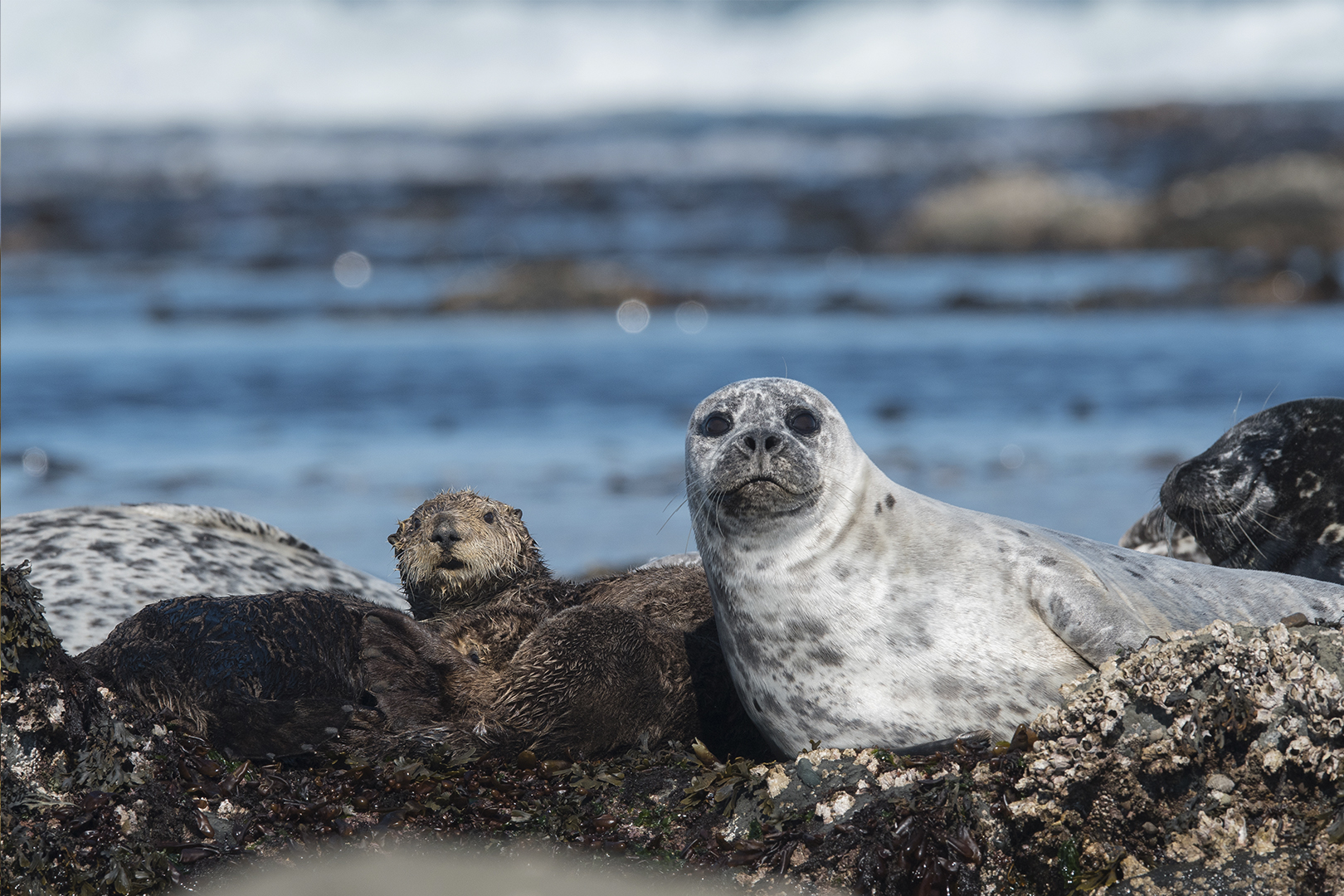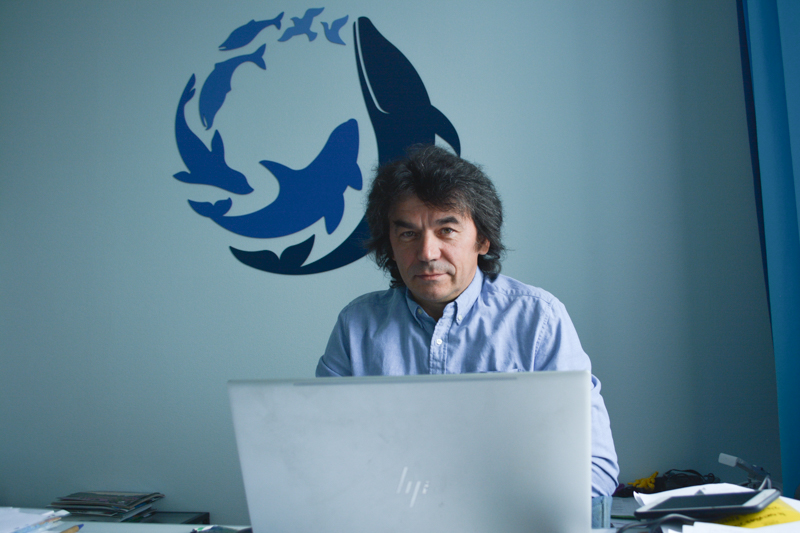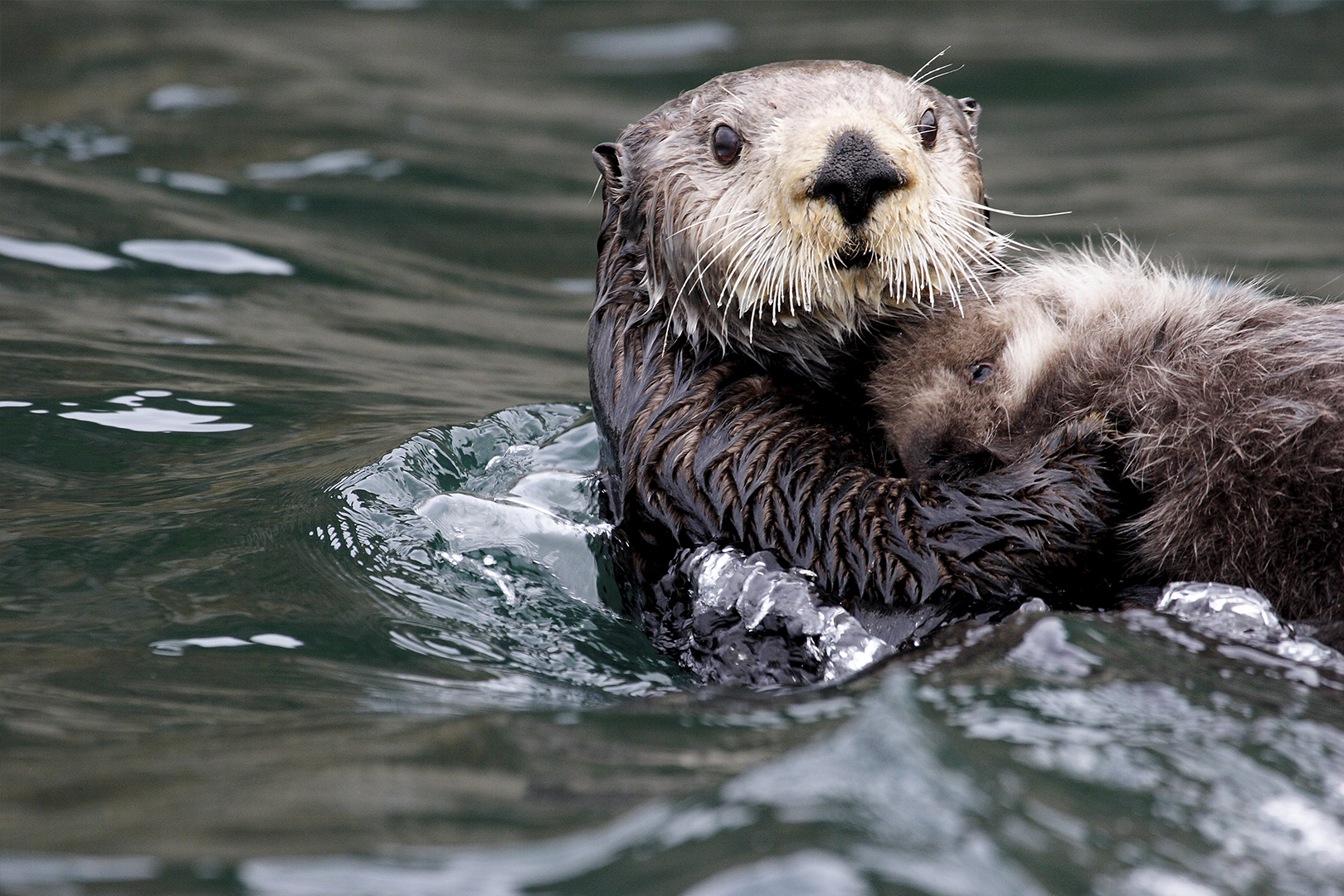The scientific community of Kamchatka will conduct research to assess the consequences of the death of benthos from the "red tide" for marine mammals. A working group will be created. It will incorporate representatives of the Ministry of Natural Resources of the Kamchatka Territory, the Commander Islands Nature and Biosphere Reserve, the Kronotsky Nature Reserve, the Kamchatka Branch of the Pacific Institute of Geography of the Far Eastern Branch of the Russian Academy of Sciences, KamchatNIRO, WWF and other experts. This decision was announced by the Governor of the Kamchatsky Krai Vladimir Solodov on October 19, in the framework of a video conference with representatives of environmental and scientific organizations.
The research will include census, study of the spatial distribution and condition of the food supply for sea otters, anthurs and gray whales. According to experts, these three species, whose food supply is associated with benthic fauna, are subject to the influence of the “red tides”.

Sea otter and harbor seal, whose diet is based on benthic organisms, are among the potential victims of the "red tide". Photo - Alexey Perelygin
At the same time, the last full-scale studies of the coast of the peninsula were carried out in 1982-1985 under the auspices of Kamchatrybvod specialist Vladimir Burkanov, now a senior researcher at Kamchatka branch of the Pacific Institute of Geography, Far East Branch, Russian Academy of Sciences, and an expert on the IUCN Pinnipeds Group. The scientist noted that the phenomenon of the "red tide" itself is not new for specialists - before, there has already been a massive death of walruses off the coast of Kamchatka due to this natural phenomenon. However, more relevant data are needed to assess the consequences of an incident. According to him, at present, monitoring of marine mammals is best established in the water area of the Commander Islands Nature Reserve, and the Kamchatka coast really requires additional attention.
“We need to start establishing system monitoring, there is no need to conduct it annually. For a number of species, the periodicity of once every 5 years is sufficient to assess the current state of the population and its dynamics. And it is impossible to confine ourselves only to counting the number, it is also necessary to carry out ecological studies, for example, benthic surveys, to determine the bioproductivity in different zones of the coast, to determine the most important zones for marine mammals and to concentrate efforts on protection there,” said Deputy Director for Science of the CINBR, Ph.D. Evgeny Mamaev

Deputy Director for Science, Ph.D. Evgeny Mamaev Photo by The Commander Islands Nature Reserve press service
Experts are convinced thet in such valuable areas, it is necessary to create marine specially protected natural area, as well as introduce nature protection zones on rookeries.
The need to resume monitoring was also confirmed by the head of the KamchatNIRO laboratory, Ph.D. Sergey Kornev. He emphasized that the last census of sea otters off the coast of Kamchatka was carried out in 2000-2003, but over the past few years, the number of this species near the Northern Kuril Islands, directly bordering the peninsula, has significantly decreased and is only 25% of the 2005-2008 population.
The director of the Kronotsky Nature Reserve, Pyotr Shpilenok, proposed introducing seasonal restrictions to reduce anthropogenic pressure and rules for observing marine wildlife. “Tourism interest in marine mammals is growing, so we need to think about how we can regulate the process of observing wild animals, while not harming them,” he said.
In addition, the head of the region, Vladimir Solodov, paid special attention to attracting public organizations to work on the protection and study of marine mammals.
“The topic of marine mammals has great potential to attract and consolidate the interested public in general, even those far from the scientific field. I think we need to launch a broad public movement to support marine mammals, decide which organization can be involved, including collecting charitable funds. I am not sure that it is necessary to specifically create such an organization, maybe it will be the existing Association of Specially Protected Natural Territories of the Kamchatka Territory, maybe some other organization that is already dealing with related issues. I believe that initiatives such as donations from souvenirs with images of marine mammals to a specialized fund, thanks to which important events will be held in addition to government funding, will be very popular,” said the head of the region.

Gray whale in the water area of the Commander Islands Nature Reserve Photo - Evgeny Mamaev.
As you remember, in September local surfers reported about the pollution of the water area of the Avacha Bay on the east coast of Kamchatka. Residents complained of burns and allergic skin reactions after contact with water in the area of Khalaktyrsky beach. Later, eyewitnesses reported large numberes of marine animals on the coast.
The results of the survey of the water area of the bay, samples of soil, benthos and water showed that the death of marine organisms in Avacha Bay was caused by a natural factor - a harmful bloom of microscopic algae-dinoflagellates. This phenomenon is called "red tide". With intensive algal bloom, the oxygen content in the water decreases, which is detrimental to marine invertebrates and fish, and they themselves produce toxins that are detrimental to warm-blooded animals.










